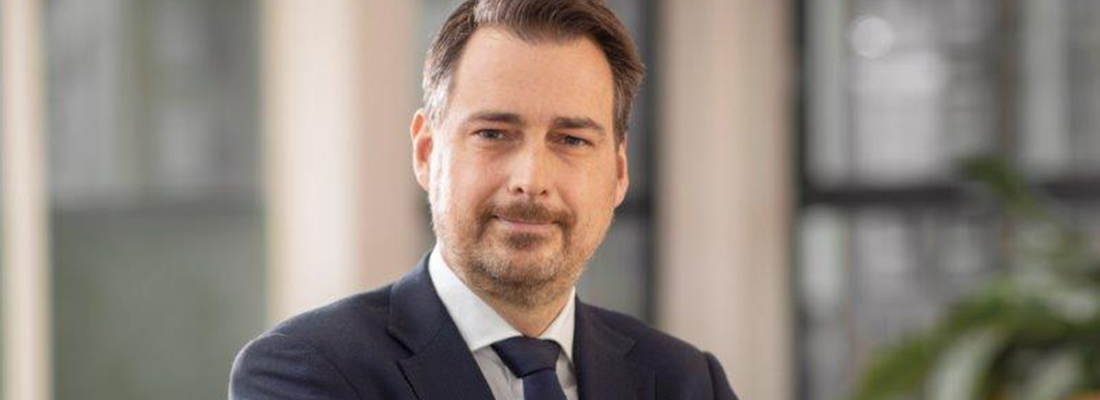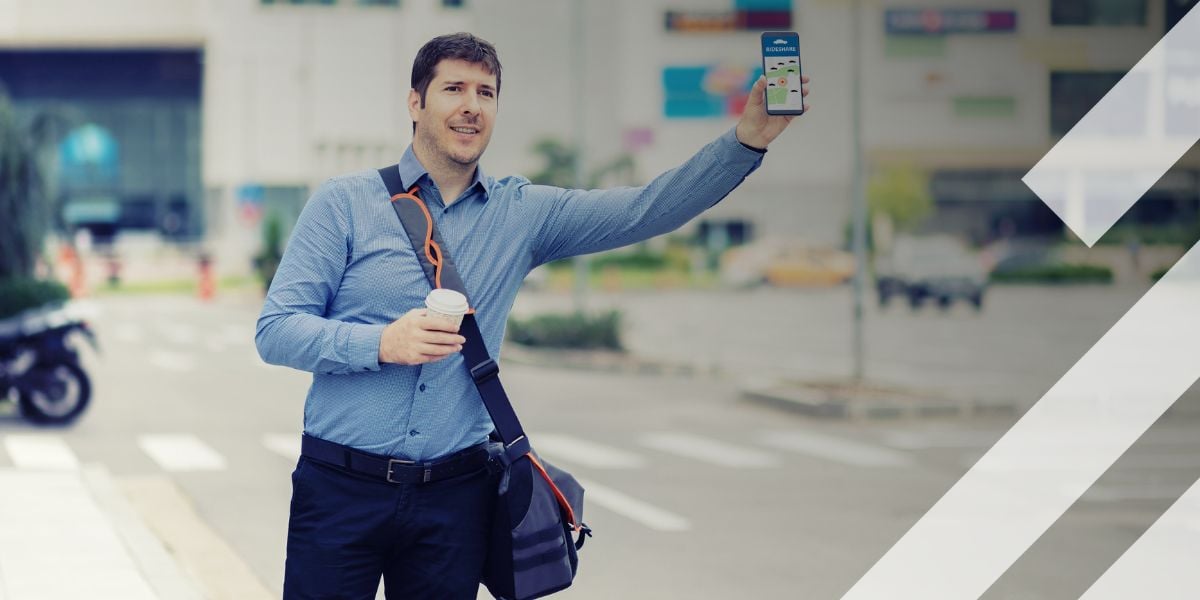Speeding up the mobility transition: Menno Nobel, Thales
“We need to put the traveler first.”
With the continuous growth of the population and ongoing urbanization there are numerous mobility challenges. Sustainability, safety and societal impact are amongst our daily concerns. We need to speed up the mobility transition to keep up with the fast changing global dynamics, which requires inventive approaches and better solutions. In this series we share inspiring and innovative cases from all over the world. Menno Nobel is Commercial Director at Thales Revenue Collection Systems known as a global ticketing and mobility solution provider, for example the ticketing system at the North-South metro line in Amsterdam. How does he speed up the mobility transition?
Since 15 years I have been working in IT and public transport systems. Public transport is one of the markets at Thales. One of the projects in the Netherlands we are really proud of is the development of an improved ticketing system for the use of the OV-chipcard (a smartcard payment system for public transport in the Netherlands) at the North-South metro line in Amsterdam. The new system started running in 2018 and Thales will be monitoring and improving the system for the next ten years. However, a big project does not go without proper challenges.
-‘A new metro system offering 150,000 people per day public transport underground.’-
In the nineties, a lot needed to be improved in public transport in Amsterdam. Not only did the city need an optimized transportation system able to transport the growing amount of citizens and tourists. It was the city’s challenge to expand public transport in a highly dense, historic center and to make transport more environmentally friendly. Since Amsterdam is an old city with soft soil and a lot of water, it was a major engineering challenge to go underground without damaging the city. The North-South line was built to improve the accessibility and network between the outer north of the city across the canal and the outer South, with the ambition to connect Schiphol Airport in the future. All of that right under the heart of the historic city center, offering public transportation to 150,000 passengers per day. With all the different parties and interests involved it was a challenge to let all the parties work together.
-‘ The traveler experience is usually not the most obvious priority at the start of building a metro line.’-
Building such a metro system takes a lot of investment and time. The customer facing IT-solutions are contracted and designed in the last phase of the completion of the metro. For me personally it was my task to make sure it was as user-friendly as possible. For everyone. These investments are relatively small if you look at the total investment. However, it has a major impact on the travel experience. It is not the most obvious one at the start of building a metro line. In Amsterdam, the traveler experience became priority number one in the last phase of the project. In the tender process of the ticketing equipment of the North–South metro line, the competitive dialogue was focused on the traveler experience. How can we make use of smart technology as a method to improve travelers’ ease and comfort? We needed to think of an easy to use and simple solution to offer a seamless traveling experience. When traveling with the metro, the first encounter is the gated ticketing system. Therefore, it needs to be user-friendly and safe: a great start of a trip.
We developed a ticketing solution, which would open via your own OV-chipcard and also has a 3D sensor. The gate recognizes whether there is a mother with a pram coming, an elderly person or if people are tail-gating to avoid paying an entrance fee. Based on the type of behavior the system decides how fast or slow the gates open and close. The solution is also bi-directional. Depending on the travelers flow, the number of gates can be adapted for incoming and outgoing travelers.
-‘We developed a futureproof ticketing system that can easily be adjusted to new needs.’-
A ticketing system that I can be very proud of. Why? Because it is futureproof. We developed a solid starting point and we can start upgrading from here based on new traveler preferences. Investments in a ticketing solution are usually made for 10 to 20 years. Technology is developing rapidly as we are in the middle of the digital transformation of public transport. So you have to think of something that is good to go for the next 10-20 years without having to replace the entire ticketing system. At the moment we are adding new payment solutions like barcode, EMV (Europay, MasterCard, Visa) and mobile payments. These new payment methods support the implementation of Mobility as a Service concepts.
The challenge is: how can we make sure that there is an easy to use payment system for everyone? Inclusion is important for public transport. Everyone should be able to use the system. From the local citizens to the occasional traveler, business traveler and the many tourists visiting Amsterdam. For instance, people who are not as digitally savvy as I am or only have a small amount of cash should be able to use the system easily. I’m proud that in the Netherlands the public transport is used by a cross section of the population. In the Netherlands, but also in Hong Kong, Singapore and Denmark there is already a nationwide public transport payment system to travel. You have one ticket for every mode of public transport that can be used around the country.
-‘ I myself travel by car as well as public transport.’-
I myself travel by hybrid car as well as public transport. Combining these two ways of transport can be improved by focusing on the traveler experience from door to door. For example, it is sometimes hard to find a parking space close to train stations and then I would miss the train. I would want to know if there is enough parking space at the station before I decide to go by train. For instance, I use a real-time app to find a place to charge my electric car. The information and technology is there to use. The challenge is to integrate it. This will motivate people to make use of electric vehicles and to combine travelling by car and public transport.
Looking at the growing population, pollution and congestions, we need to speed up the mobility transition. How can we improve traffic flows and give people an incentive to travel otherwise or at a different time? The four key digital pillars of the digital transformation: Artificial Intelligence, Cyber Security, Internet of Things and Big Data will play a major role in solving these challenges. For example, we need data to give personal real-time advice to every traveler. Integration of all data from several sources in one platform offers the solution. This needs to be done within the rules of GDPR. In Asia we have a solution for crowd management.
If a platform is getting too crowded, the gates will no longer open for new travelers on the platform and commuters will be redirected. Based on data the frequency of the metros will be also adjusted accordingly. Data can also play a role for operators to offer different fees for different time slots. In this way we can improve the traffic flows, offering more comfort and ease to the traveler.
To achieve the next steps in the digital transformation, we all need to work together between the different means of transport. All the systems are already there, we just need to integrate them with each other. In the end we want one smart MaaS-system that gives real-time personal advice about the mode of transport you should take, to plan your entire trip and be able to pay either the train, shared car, parking lot, bicycle or subway via one system. I believe a smart MaaS-system contributes to reducing the polluting traffic jams and is a better solution than extending highways.
The new generation plays an important role in overcoming the barriers as they grow up in a digital world and are less interested in owning a car. I enjoy discussing and testing mobility challenges with youngsters. For example, in the Netherlands there is an organization called Railforum. This is an independent knowledge network that consists of 200 companies and organizations that are active in the rail sector. Part of Railforum is a group called ‘Young Changers’. Young people who feel an urge to make a change within the public transport industry. They inspire me. Let’s make use of everyone’s knowledge to really make a change.
Menno Nobel is Commercial Director at Thales and Board member of Railforum. Thales is a global tech company that offers technology solutions for tomorrow’s challenges to clients in transportation industry, IT and defense. With 80,000 employees spread over 68 countries and a revenue of € 19 billion in 2018 (pro forma and including Gemalto) Thales invests in digital innovation such as connectivity, big data, AI and cybersecurity. For the transportation market it develops IT-solutions for rail signaling, ticketing, tolling and parking.
Share your story
Do you have an innovation, research results or an other interesting topic you would like to share with the professionals in the infrastructure, traffic management, safety, smart mobility and parking industry? The Intertraffic website and social media channels are a great platform to showcase your stories!
Please contact our Sr Brand Marketing Manager Carola Jansen-Young.
Are you an Intertraffic exhibitor?
Make sure you add your latest press releases to your Company Profile in the Exhibitor Portal for free exposure.
Get up to speed on the mobility industry - our newsletter straight to your inbox!


.jpg?h=600&iar=0&w=1200)





